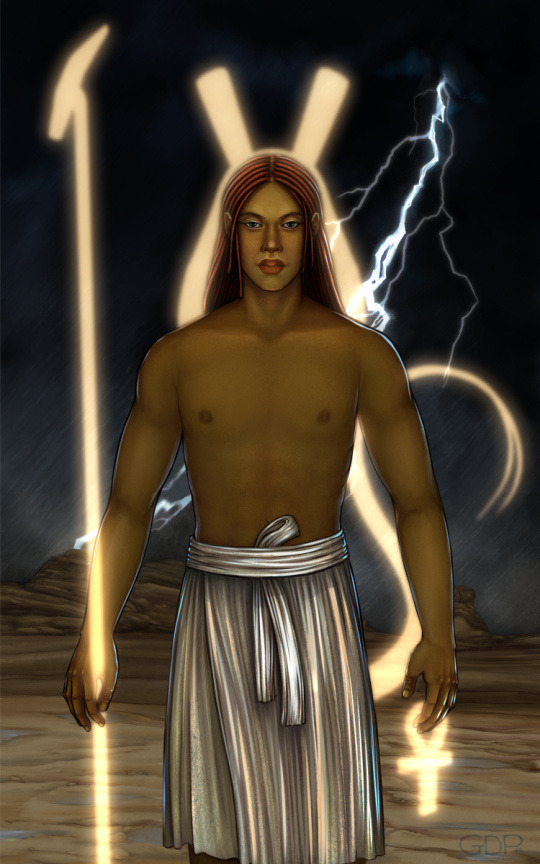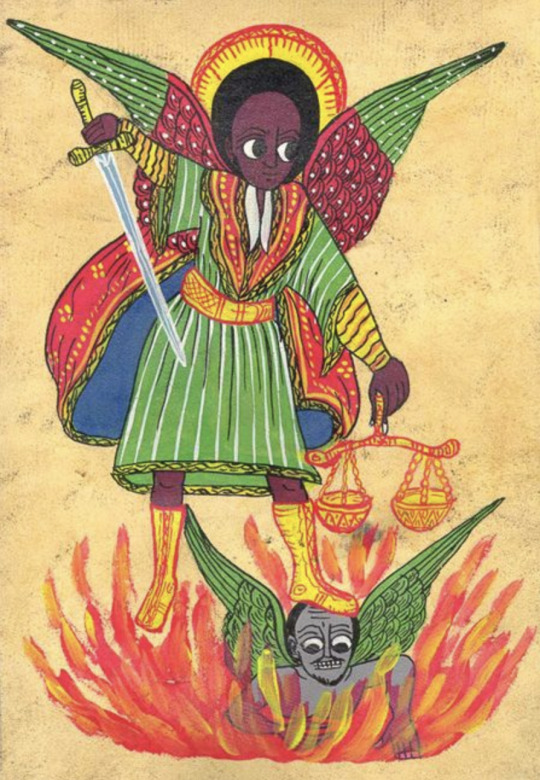Because BIack, Indigenous, &/or People of Color deserve it. Because white people need it.
Don't wanna be here? Send us removal request.
Photo

86 notes
·
View notes
Photo

“But the angel said to her, “Do not be afraid, Mary; you have found favor with God. You will conceive and give birth to a son, and you are to call him Jesus. He will be great and will be called the Son of the Most High. The Lord God will give him the throne of his father David, and he will reign over Jacob’s descendants forever; his kingdom will never end.” - Luke 1: 30-33
“Hopi Madonna and Child”
By Father John Giuliani
80 notes
·
View notes
Photo

the offering of wine to “Isis the Great, the Queen of the Two Lands” (translation of the hieroglyphs on the top left and above the Solar Crown). The Goddess Isis is depicted gold-skinned, wearing the Solar disk with cow’s horns and the uraeus. On the top, a row of stars representing the Sky. Detail from the “House of Eternity” of King Horemheb, KV57, Valley of the Kings, west ‘Uaset’-Thebes:
208 notes
·
View notes
Photo

Lord of Disorder:
Set is the Egyptian god of disorder, violence, storms and all things foreign. In a dualistic worldview like that of ancient Egypt, he is in direct opposition to Horus, who represents order, civilization and the fertility of the Nile. In the early history of Egypt, however, Set was not considered evil. He was a necessary foil to Horus and even an important player against the destructive serpent Apep. Several Old Kingdom pharoahs use his name as part of their official titles. As time went on, he became more closely identified with spirits of evil, and his worship ceased by the New Kingdom. The Hyksos invaders of the second intermediate period took Set as their primary god, since he was associated with foreign influences. Often portrayed as red-haired, like the red desert he symbolizes, Set’s symbols included the was-scepter and the Set-animal, an unusual creature that combined features of a jackal, an aardvark, a donkey and possibly a fennec. The Set-animal is notable for its curved nose, tall upstanding ears, and forked tail. Set might be called upon in times of necessary disruption or for protection from the chaos he embodies.
140 notes
·
View notes
Text

Ethiopian Orthodox icon of Saint Michael the Archangel.
4K notes
·
View notes
Photo

Coptic painting of angels (Possibly the cherub guarding the entrance to the Garden of Eden or St. Michael.)
103 notes
·
View notes
Text
the thought of Jesus whittling……….. i’m soft
449 notes
·
View notes
Photo

Also in the Chapel: St Kateri Tekakwitha, the first Native American saint.
182 notes
·
View notes
Text

“Black Elk, The Loving Grandfather,” by Brother Mickey McGrath, O.S.F.S.
Many may be surprised to learn that the rosary is an authentically Lakota prayer. But if you hear the story of the rosary’s origin with Lakota ears, you won’t be surprised at all. The story begins with St. Dominic (1170–1221), the founder of the Order of Preachers. Convinced that God called him to bring the Albigensians back to orthodoxy, he went to France and began preaching. Despite his oratorial skill and years of effort, he had no effect. Defeated, St. Dominic retreated into the wilderness where he fasted and prayed for three days.
A traditional Lakota wouldn’t miss the parallel with the haŋbléčheya, the vision quest. In this Lakota ceremony, a supplicant goes to a secluded place to fast and pray for a number of days, crying to the Spirits for a vision. The Spirits often answer with gifts of power, some of which end up becoming new ceremonies.
215 notes
·
View notes
Text
This article talks a lot about sacred ways of the Apache people (esp. Christian Apaches) and their knowledge and visions of what they find to be sacred.
94 notes
·
View notes
Photo

Native American Seminole Madonna and Child by John Giuliani
167 notes
·
View notes
Text

Lakota Trinity by the late artist Father John Giuliani
"In this image, the great Father—Wakan Tanka—appears with a full headdress of eagle feathers in a halo of light.
His open hands deliver the Son, a victorious Sioux warrior whose raised arms and open hands reflect a similar gesture of self-giving.
He wears a richly decorated buckskin war shirt—heavily fringed, beaded and painted with the four color circle of the universe as its breast plate.
The eagle represents the Holy Spirit and completes the spiral of trinitarian love and unity."
From the Catholic Extension Society.
325 notes
·
View notes






